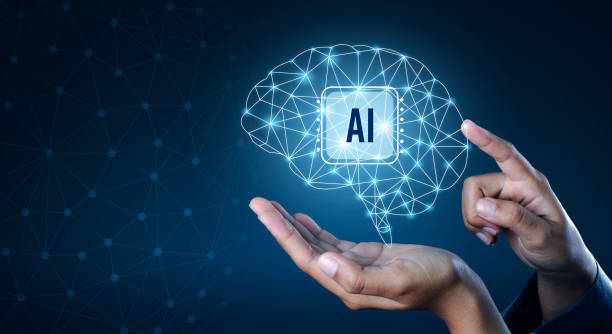What is an AI Robot? Definition, History, and Applications
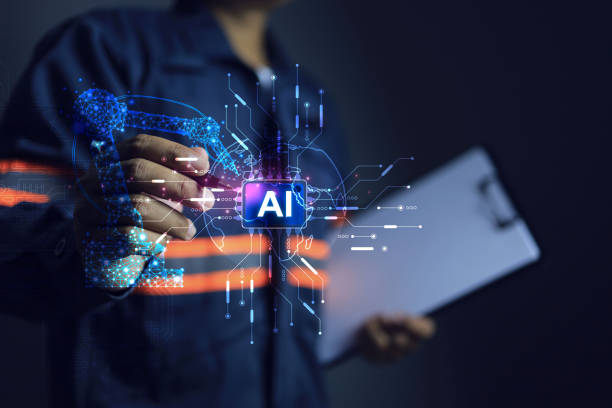
#AI Robot is a combination of two important technology fields: robotics and artificial intelligence.
Simply put, an AI robot is a machine that, using artificial intelligence algorithms, can perform tasks that typically require human intelligence.
These tasks can include learning, reasoning, problem-solving, perception, and interaction with the environment.
The history of AI robots dates back to the 1950s, when researchers began exploring the possibility of building machines that could think like humans.
Over the years, significant advances have been made in the fields of artificial intelligence and robotics, leading to the creation of more intelligent and efficient robots.
The applications of AI robots are very broad and include industries such as manufacturing, healthcare, education, agriculture, customer service, and even entertainment.
For example, in the manufacturing industry, AI robots can be used to perform repetitive and dangerous tasks, while in healthcare, they can assist doctors in diagnosing diseases and performing complex surgeries.
Intelligent robots use complex algorithms to analyze data collected from the surrounding environment and, based on that, make decisions and act.
This capability allows AI robots to perform their tasks automatically and without the need for human intervention in various situations.
Intelligent robots can adapt to environmental changes in complex and dynamic environments and continuously improve their performance.
Artificial intelligence acts as the thinking brain of the robot and allows it to understand, learn, and act.
Dreaming of a thriving online store but don’t know where to start?
Rasaweb is your comprehensive solution for e-commerce website design.
✅ Attractive and user-friendly design
✅ Increased sales and revenue⚡ Get a free consultation
Types of AI Robots Based on Application
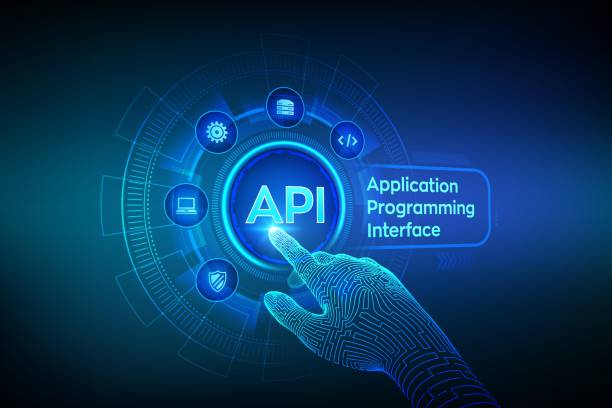
Intelligent robots come in various types based on their application.
Industrial robots are used in factory production lines to perform repetitive and heavy tasks.
Service robots are used in hospitals, hotels, and restaurants to provide services to customers.
Medical robots assist doctors in performing precise and complex surgeries.
Educational robots are used in schools and universities to teach various concepts to students.
And military robots are used in military operations to perform dangerous and difficult tasks.
Each type of AI robot has specific features and capabilities depending on its application.
For example, industrial robots usually have high power and precision, while service robots must have the ability to interact with humans and understand natural language.
Choosing the right type of AI robot depends on the specific needs and requirements of each application.
In recent years, with significant advances in artificial intelligence, smart robots have become more efficient and intelligent.
This has led to the expansion of their applications in various industries.
For example, AI robots are currently used in the automotive industry to produce self-driving cars, in the agricultural industry to harvest agricultural products, and in the retail industry to provide services to customers.
Main Components of an AI Robot
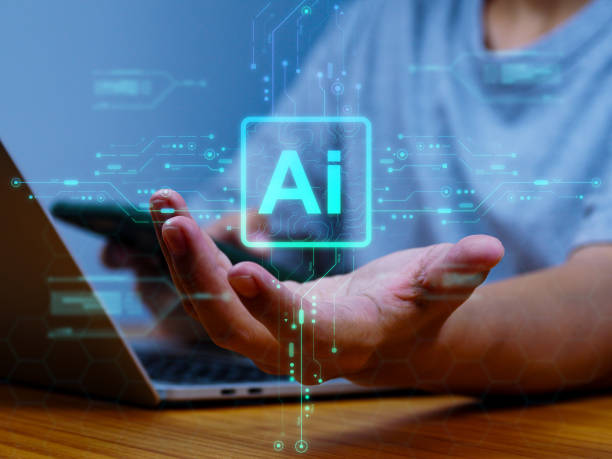
An #AI Robot consists of various components, each playing an important role in its performance.
These components include: Sensors, which are used to collect information from the surrounding environment.
Processors, which are used to process the collected information and make decisions.
Actuators, which are used to perform physical actions.
Artificial intelligence software, which includes machine learning, natural language processing, and computer vision algorithms.
Power source, which is used to supply the robot with the required energy.
Each of these components has specific features and specifications that affect the overall performance of the AI robot.
For example, sensors must be able to collect accurate and reliable information from the environment, processors must have sufficient processing power to process complex information, and actuators must be able to perform physical actions with high precision and speed.
Artificial intelligence software must be able to interpret information correctly, make appropriate decisions, and continuously improve the robot’s performance.
Choosing the right components for a smart robot depends on the type of application and its specific requirements.
| Components | Description |
|---|---|
| Sensors | Collecting information from the environment |
| Processors | Processing information and making decisions |
| Actuators | Performing physical actions |
| Artificial intelligence software | Machine learning algorithms |
Advantages of Using AI Robots
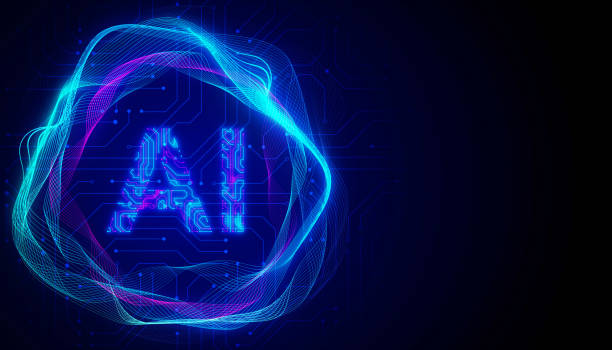
The use of intelligent robots has many advantages, including increased productivity, reduced costs, improved quality, increased safety, and the ability to perform complex and dangerous tasks.
Intelligent robots can work around the clock and without fatigue, which leads to increased productivity and reduced labor costs.
Also, intelligent robots can perform tasks with higher accuracy and speed than humans, which leads to improved product and service quality.
In addition, AI robots can work in dangerous and difficult environments, such as mines and nuclear power plants, instead of humans, which leads to increased worker safety.
Another important advantage of using AI robots is the ability to perform complex and specialized tasks that are difficult or impossible for humans to perform.
For example, AI robots can be used to perform complex surgeries, analyze large data, and predict market trends.
Overall, the use of intelligent robots can lead to improved performance, reduced costs, and increased safety in various industries.
Do you have an online store but your sales are not as expected? Rasaweb solves your problem forever with professional e-commerce website design!
✅ Significant increase in conversion rate and sales
✅ Unparalleled user experience for your customers
⚡ Click to get a free consultation with Rasaweb!
Challenges Facing the Development of AI Robots
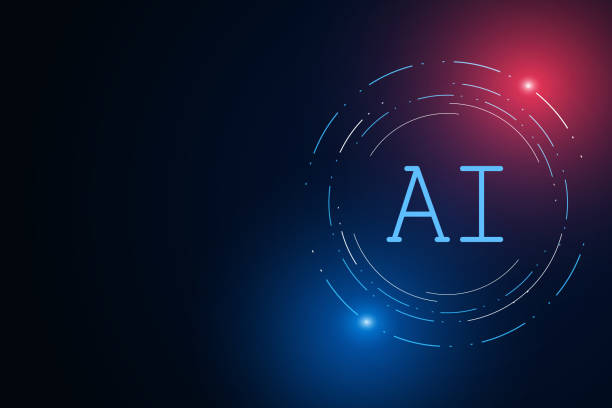
The development of AI robots faces numerous challenges.
These challenges include the high cost of development and maintenance, ethical and social issues, shortage of skilled labor, and security issues.
Developing and maintaining intelligent robots requires large investments in research and development, equipment, and human resources.
Also, the use of intelligent robots can lead to ethical and social issues, such as job loss and discrimination.
The shortage of skilled labor in the fields of artificial intelligence and robotics is another challenge facing the development of this technology.
In addition, intelligent robots can be vulnerable to cyber attacks and be misused.
For example, hackers can take control of an AI robot and use it to perform malicious acts.
Therefore, appropriate security measures must be taken to protect intelligent robots from cyber attacks.
To solve these challenges, governments, organizations, and researchers need to work together and provide appropriate solutions to address these challenges.
The Future of AI Robots and Their Impact on Our Lives
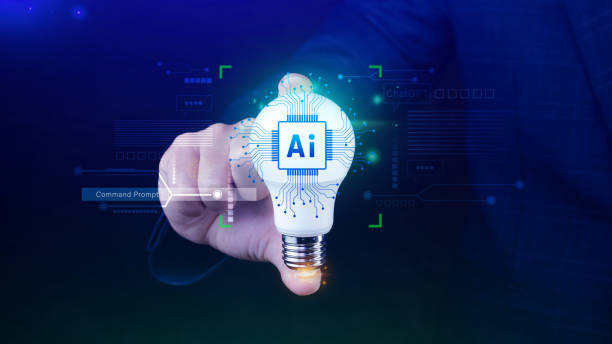
The future of AI robots is very bright and promising.
It is predicted that in the future, intelligent robots will play a more important role in our lives and will be present in all aspects of our lives.
Future applications of AI robots include self-driving cars, smart homes, virtual assistants, surgical robots, and space robots.
Self-driving cars can make transportation safer, more efficient, and more convenient.
Smart homes can make life easier, more comfortable, and safer.
Virtual assistants can help us perform daily tasks.
Surgical robots can perform complex surgeries with higher accuracy and speed.
And space robots can help us explore space.
However, we must also pay attention to the challenges facing the development of intelligent robots and provide appropriate solutions to address these challenges.
For example, appropriate laws and regulations need to be put in place to prevent the misuse of AI robots.
Also, appropriate training programs need to be provided to train skilled labor in the fields of artificial intelligence and robotics.
Overall, the future of intelligent robots is very bright and promising, and this technology can have positive impacts on our lives, provided that it is properly managed and controlled.
The future of artificial intelligence promises significant transformations in human life.
Machine Learning and Its Role in the Development of AI Robots

Machine learning is one of the most important subfields of artificial intelligence, playing a fundamental role in the development of intelligent robots.
Machine learning allows intelligent robots to learn from data and continuously improve their performance.
In other words, intelligent robots that use machine learning do not need to be explicitly programmed to perform each task; rather, they can learn how to perform tasks by observing data and experience.
There are different types of machine learning algorithms, each suitable for specific applications.
These algorithms include supervised learning, unsupervised learning, and reinforcement learning.
In supervised learning, the intelligent robot is trained using labeled data.
In unsupervised learning, the intelligent robot is trained using unlabeled data.
In reinforcement learning, the intelligent robot is trained using trial and error.
Choosing the right type of machine learning algorithm depends on the type of data and the type of task that the AI robot needs to perform.
For example, if the goal is for the AI robot to be able to recognize images, supervised learning algorithms are used.
And if the goal is for the AI robot to become skilled in a computer game, reinforcement learning algorithms are used.
| Learning Type | Description | Example |
|---|---|---|
| Supervised Learning | Training with labeled data | Image Recognition |
| Unsupervised Learning | Training with unlabeled data | Customer Clustering |
| Reinforcement Learning | Training with trial and error | Playing Games |
Natural Language Processing and Human Interaction with AI Robots
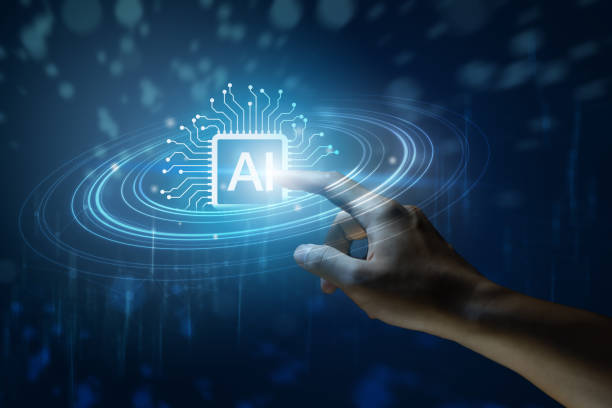
Natural Language Processing (NLP) is another important area of artificial intelligence that plays a fundamental role in human interaction with intelligent robots.
Natural language processing enables the AI robot to understand, interpret, and produce human language.
In other words, intelligent robots that use natural language processing can speak to humans in natural language, understand human commands, and answer human questions.
Natural language processing includes a set of techniques and algorithms that are used to analyze and process human language.
These techniques include syntactic analysis, semantic analysis, and natural language generation.
Syntactic analysis allows the intelligent robot to understand the structure of sentences in human language.
Semantic analysis allows the intelligent robot to understand the meaning of sentences in human language.
And natural language generation allows the intelligent robot to produce sentences in human language.
AI robots equipped with natural language processing can be used in various applications.
These applications include virtual assistants, customer service, machine translation, and sentiment analysis.
Virtual assistants, such as Siri and Alexa, use natural language processing to understand user commands and answer user questions.
Customer service uses natural language processing to provide support to customers through chatbots and phone calls.
Machine translation uses natural language processing to translate text from one language to another.
And sentiment analysis uses natural language processing to detect people’s emotions through text and speech.
Recent advances in natural language processing have led to the creation of AI robots that are capable of interacting with humans in a more natural and effective way.
Natural Language Processing is the key to effective human-machine interaction.
Are you lagging behind in competition with large online stores?
Rasaweb creates a professional e-commerce website to bring your business online and increase your market share!
✅ Significant increase in brand credibility and customer trust
✅ Easy shopping experience leads to more sales
⚡ Take action now to receive free website design consultation!
Computer Vision and Environmental Understanding by AI Robots
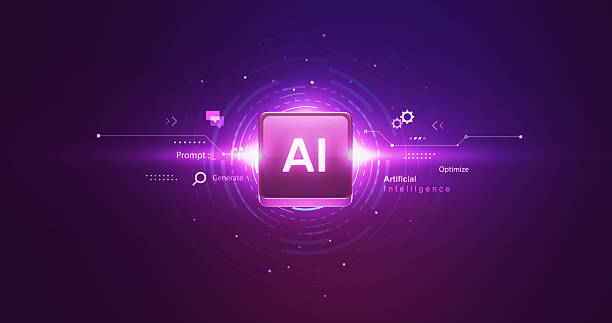
Computer Vision is an important area of artificial intelligence that plays a fundamental role in environmental understanding by AI robots.
Computer vision allows AI robots to process images and videos, recognize objects, and understand their surrounding environment.
In other words, AI robots that use computer vision can see and understand like humans.
Computer vision includes a set of techniques and algorithms that are used to analyze and process images and videos.
These techniques include edge detection, object detection, face detection, and 3D reconstruction.
Edge detection allows the AI robot to detect the edges of objects in images.
Object detection allows the AI robot to detect different objects in images.
Face detection allows the AI robot to detect people’s faces in images.
And 3D reconstruction allows the AI robot to create a 3D model of its surrounding environment.
AI robots equipped with computer vision can be used in various applications.
These applications include self-driving cars, security systems, industrial robots, and medical robots.
Self-driving cars use computer vision to detect traffic signs, detect obstacles, and navigate.
Security systems use computer vision to detect people’s faces and detect threats.
Industrial robots use computer vision to inspect product quality and perform assembly tasks.
And medical robots use computer vision to diagnose diseases and perform surgeries.
Recent advances in computer vision have led to the creation of AI robots that are capable of understanding their surrounding environment in a more accurate and efficient way.
AI robots using #Computer_Vision are able to identify and react to their surroundings.
Computer Vision allows machines to see and understand.
Ethical and Legal Issues Related to AI Robots

The development and use of AI robots have raised several ethical and legal issues that need to be addressed.
These issues include accountability, privacy, discrimination, and job loss.
Accountability means that if an AI robot makes a mistake or causes an accident, who will be responsible? Will the robot’s manufacturer, the robot’s owner, or the robot itself be responsible? Privacy means that how can we prevent the unauthorized collection and use of personal data by AI robots? Discrimination means that how can we prevent racial, gender, and other types of discrimination by AI robots? And job loss means that how can we deal with the job loss consequences of replacing human labor with AI robots?
To solve these ethical and legal issues, appropriate laws and regulations need to be put in place for the development and use of AI robots.
These laws and regulations should be designed to protect the rights and freedoms of individuals, prevent the misuse of AI robots, and ensure accountability in the event of a mistake or accident.
Also, appropriate training should be provided to the general public about AI robots so that people can use this technology correctly and safely.
Overall, the ethical and legal issues related to AI robots should be taken seriously to prevent the negative consequences of this technology.
AI Ethics should be considered in the development of this technology.
Frequently Asked Questions
| Question | Answer |
|---|---|
| What is an AI Robot? | An Artificial Intelligence (AI) Robot is a machine capable of understanding the environment, reasoning, learning, and making decisions to perform tasks independently. |
| What is the difference between regular robots and AI robots? | Regular robots perform repetitive tasks based on previous programming, while AI robots can learn from experience, interact dynamically with the environment, and even behave in a way that resembles human intelligence. |
| What are the main applications of AI robots? | They are used in industries (manufacturing, assembly), medicine (surgery, diagnosis), services (customer support, domestic), exploration (space, underwater), and many other fields. |
| What technologies are used in the construction of AI robots? | Machine Learning, Computer Vision, Natural Language Processing, Deep Learning, and Robotics are among the key technologies. |
| Can AI robots have feelings? | Currently, robots do not have feelings in the human sense. They can identify and react to emotions, but they do not experience emotions themselves. |
| What are the main challenges in developing AI robots? | Safety, reliability, ethics, autonomy, adaptability to complex environments, and natural interaction with humans are important challenges. |
| How do AI robots train? | They are usually trained using a large volume of data, machine learning algorithms, and deep learning to identify patterns and make decisions. |
| Examples of AI robots in everyday life? | Smart robotic vacuum cleaners, customer support chat robots, self-driving cars, and surgical robots in hospitals. |
| Are AI robots a threat to human jobs? | Some repetitive jobs may be automated, but at the same time, robots can increase productivity and create new jobs in the development, maintenance, and monitoring of these systems. |
| How is the future of AI robots predicted? | They are expected to become smarter, more autonomous, and capable of performing more complex tasks and be in closer interaction with humans in various environments. |
And other services of Rasa Web Advertising Agency in the field of advertising
Smart Conversion Rate Optimization: A combination of creativity and technology to increase website traffic through intelligent data analysis.
Smart Digital Branding: A dedicated service to grow customer attraction based on precise audience targeting.
Smart Website Development: A combination of creativity and technology for digital branding through precise audience targeting.
Smart Sales Automation: A new service to increase click-through rates through marketing automation.
Smart Custom Software: A combination of creativity and technology to improve SEO ranking through SEO-driven content strategy.
And more than hundreds of other services in the field of internet advertising, advertising consulting, and organizational solutions
Internet Advertising | Advertising Strategy | Advertorial
Sources
What is a Smart Robot? Types, Applications, and Benefits
,Experts with a smart robot that is made in the field
,What is artificial intelligence and how does it work
,Robots and Artificial Intelligence
? With Rasaweb Afrin, take your business to the peak in the digital world! With our expertise and experience in all areas of digital marketing, including multilingual website design, SEO, and social media management, we are with you to create a powerful and influential presence for your brand.
📍 Tehran, Mirdamad Street, next to the Central Bank, South Kazerun Alley, Ramin Alley No. 6

